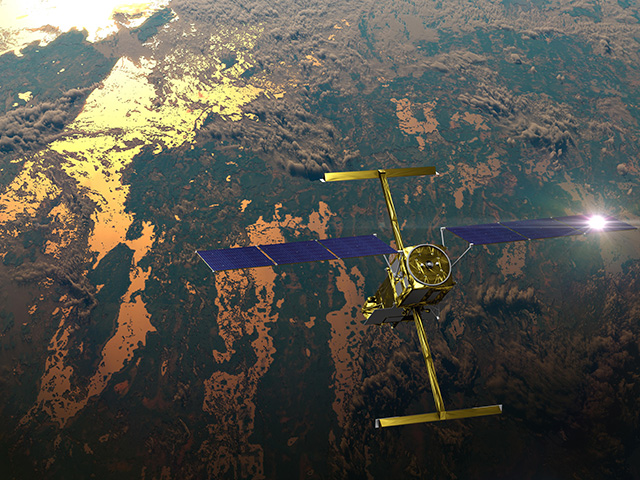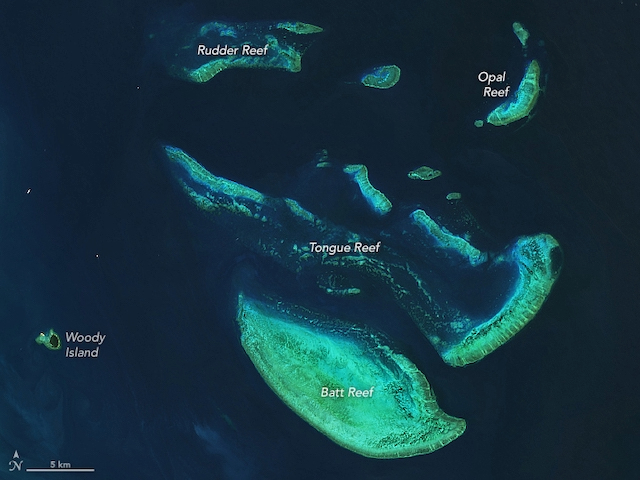QUESTIONS
Test your knowledge of how Earth is different from other planets.
-
 1. Earth is called a 'Goldilocks planet' because:
1. Earth is called a 'Goldilocks planet' because:A. Its distance from the sun is 'just right' for life.
B. It has bears on it.
C. Scientists don't refer to Earth this way. -
 2. Mars once had running water that carved canyons and other features into its surface. What happened to the water?
2. Mars once had running water that carved canyons and other features into its surface. What happened to the water?A. Mars is too far from the sun and cold to sustain water.
B. Marsquakes caused all the water to seep into cracks in the crust.
C. An asteroid clobbered Mars and vaporized the water.
D. Most of Mars' atmosphere and water evaporated. -
 3. Earth isn't the only body in the solar system with rivers and lakes. Which other world has similar features?
3. Earth isn't the only body in the solar system with rivers and lakes. Which other world has similar features?A. Mercury (liquid lead)
B. Saturn's moon Titan (liquid methane)
C. Saturn (liquid oxygen)
D. Neptune's moon Triton (liquid ammonia) -
 4. Earth and Venus are rocky planets of about the same size, but Earth's average surface temperature is about 59° F, while Venus' is 1350° F, hot enough to melt lead or aluminum. Why the difference?
4. Earth and Venus are rocky planets of about the same size, but Earth's average surface temperature is about 59° F, while Venus' is 1350° F, hot enough to melt lead or aluminum. Why the difference?A. Venus has a stronger greenhouse effect than Earth's.
B. Venus is made of denser rock than Earth.
C. Earth is more geologically active than Venus.
D. Ice caps and oceans on Earth absorb energy from the atmosphere. -
 5. Which circumstance could end life on Earth?
5. Which circumstance could end life on Earth?A. The sun continues to heat up. In a billion years, Earth gets too hot, oceans evaporate, carbon dioxide disappears, plant life dies out.
B. A massive asteroid smashes into Earth, vaporizing vast swaths of the surface and permanently changing the atmosphere.
C. Both of the above.
D. None of the above. -
 6. Earth's magnetic field shields us from solar wind and helps hold onto atmosphere and water. To what do we owe this invisible protector?
6. Earth's magnetic field shields us from solar wind and helps hold onto atmosphere and water. To what do we owe this invisible protector?A. The aurora borealis.
B. Plate tectonics.
C. Earth's circulating liquid metal core.
D. All of the above -
 7. Earth is the only body in the solar system thought to have oceans of liquid water.
7. Earth is the only body in the solar system thought to have oceans of liquid water.A. True
B. False -
 8. Earth is smack in the middle of the 'habitable zone' around the sun, where temperatures are right for liquid water to exist.
8. Earth is smack in the middle of the 'habitable zone' around the sun, where temperatures are right for liquid water to exist.A. True
B. False -
 9. Exoplanets that have lots of volcanic activity and exist in systems with lots of asteroids are bad prospects for looking for extraterrestrial life.
9. Exoplanets that have lots of volcanic activity and exist in systems with lots of asteroids are bad prospects for looking for extraterrestrial life.A. True
B. False -
 10. Small, Earth-size planets are common in the galaxy.
10. Small, Earth-size planets are common in the galaxy.A. True
B. False
ANSWERS
- A. Goldilocks planet falls within a star's habitable zone and is neither too close nor too far from a star to rule out liquid water on its surface, and thus life.
- D. Most of Mars's atmosphere and water evaporated.
- B. Saturn's moon Titan (liquid methane)
- A. Venus's atmosphere is almost all heat-trapping carbon dioxide.
- C. Scientists believe the first scenario is a certainty and the second just a matter of time.
- C. The magnetic field is essential for life and a defining characteristic of Earth.
- False. Scientists think Jupiter's moon Europa has an ocean of liquid water under its icy surface.
- False. The habitable zone around the sun extends roughly from Venus to Mars. Earth is relatively close to the inner (warm) edge, not the middle.
- False. Volcanoes push out water vapor and other chemicals that help make a life-sustaining atmosphere, and icy asteroids and comets may have helped bring water to Earth's surface when it was forming.
- True. The Kepler satellite mission found that small planets are the most common in the galaxy. Small planets are more likely to have a 'rocky' (solid) surface, which is conducive to life at least as we know it.













